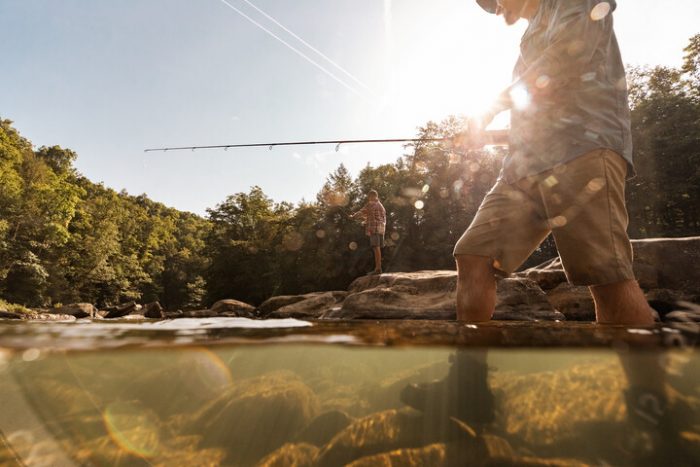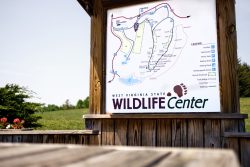Red-osier – Cornus stolonifera
Kinnikinnik – C. amomum
Pale Dogwood – C. obliqua
Gray Dogwood – C. racemosa
Alternate-leaved Dogwood – C. alternifolia
Round-leaved Dogwood – C. rugosa
Dogwood family
Shrubs or small trees with deciduous, opposite, (except Alternate-leaved Dogwood) simple leaves with prominent leaf veins running parallel to the leaf tip. Flowers are whitish clusters, 2 to 3 inches in diameter and are flat rounded.
Form
Red-osier: Loose spreading, suckers freely, to 10 feet tall.
Kinnikinnik: Young shrubs rounded, older shrubs straggling and open, to 10 feet tall.
Pale: Young shrubs rounded, older shrubs straggling and open, 10 feet tall.
Gray: Slender shrubs that sucker profusely and spread readily, 15 feet tall.
Alternate-leaved: Greenish twigs, alternate, pith white.
Round-leaved: Coarse shrub to 10 feet tall.
Twigs and Bark
Red-osier: Bright red or green twigs, white pith.
Kinnikinnik: Dull purple (reddish in winter), silky, hairy twigs, brown pith.
Gray: Twigs gray to brown, pith brown.
Alternate-leaved: Greenish twigs, alternate, pith white.
Round-leaved: Green to reddish twigs with purple blotches.
Leaves
Red-osier: Whitened beneath, purple to red fall color.
Kinnikinnik: Egg-shaped with rounded base, brown to reddish hairs on veins beneath, reddish purple fall.
Pale: Similar to Kinnikinnik but more narrow, tapering leaf bases, white hairy beneath, 2 times long as broad.
Gray: Whitened beneath, purplish in fall.
Alternate-leaved: 1 to 3 inch petioles, long tapering tips, leaves crowded at tip of twigs, reddish purple fall color.
Round-leaved: Wide egg-shaped to nearly round, woolly beneath.
Flowers and Fruit
Red-osier: Flowers in small, white, flat-topped clusters in late May or June. Fruit white (Sept.)
Kinnikinnik: Flowers in small white flat-topped clusters cvovered with silky hairs, fruit bluish with white blotches.
Pale: Similar to Kinnikinnik.
Gray: Flowers in small (1 to 2 inch diameter) rounded clusters in late May or June, fruit white with showy red stalks that remain through late fall and early winter.
Alternate-leaved: Flowers in small whitish clusters that are flat-topped, bloom from May to June, very fragrant, fruit is blue-black with showy red stalks, waxy covered.
Round-leaved: Flowers in white flat-topped clusters from May to June, fruit is light blue (Aug-Oct.).
WV Range
Red-osier: Rare, Mineral, Monongalia , Ohio and Preston .
Kinnikinnik: Common in every county.
Pale: Grant, Greenbrier, Hampshire, Hardy, Jefferson , McDowell , Ohio , Pocahontas, Preston , Ritchie, Summers and Upshur.
Gray: Grant, Greenbrier, Hampshire, Hancock, Hardy, Harrison , Kanawha, Marion , Marshall , Mercer, Mineral, Nicholas, Pendleton, Pocahontas, Preston , Randolph , Summers, Taylor and Wetzel.
Alternate-leaved: Throughout WV.
Round-leaved: Mineral and Pendleton.
Natural Habitat
Red-osier: Streambanks and wet thickets.
Kinnikinnik: Common in every county.
Pale: Swamps and moist thickets.
Gray: Moist or dry soils in old fields, thickets, and fencerows and forest margins.
Alternate-leaved: Thickets and open woods.
Round-leaved: Rocky, dry soil.
Wildlife Use
Fruits are eaten by many songbirds such as cardinal, robin, thrushes, waxwing, catbird and chat. The fruit is mostly eaten prior to winter and thus is gone by the critical period in late winter and early spring. Game birds such as grouse, bobwhite, turkey, wood duck and woodcock readily eat the fruits, as do black bear, raccoon, woodchuck, squirrels, and chipmunk. Twigs and leaves are eaten by deer, rabbit, snowshoe hare, and beaver. Thickets of these shrubs are valuable for shelter and nesting sites.
Horticulture
Uses: Borders, groups or massings, screens or specimen.
Light: Partial shade to open sun.
Soil Moisture: Most species will grow best in moist well-drained soils
Round-leaved and Pale will grow in wet or dry soils.
Alternate-leaved prefers a range from moist to dry soils while Red-osier and Kinnikinnik prefer wetter soils.
Soil pH: Medium acid to neutral.
Problems: Most of these species are relatively free from major pests and diseases. Alternate-leaved is sometimes affected by twig blight and Kinnikinnik can be affected by scale insects.



